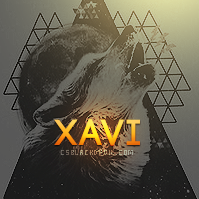Everything posted by Ronaldskk.
-
The csbd administration is looking for active moderators, if you are interested contact me by pm or discord as: immortal_2007 and if you want to learn how to be on the forum staff, seek guidance from me or from any forum administrator.
Immortal administrator of the CSBD.
-
-
You need 10 hours minimum to request tag until then return after 2 weeks with a new request.
-
Accepted. Welcome back to the staff .
-
Voted✓
-
welcome to the staff.
-

[Software]Modular software for scientific image reconstruction
Ronaldskk. posted a topic in Software
https://techxplore.com/news/2024-05-modular-software-scientific-image-reconstruction.html Scientists use an array of imaging instruments to look inside living organisms, sometimes as they move, and to observe inert objects without altering their state. Such instruments include telescopes, microscopes, CT scanners and more. But these instruments, even when working at maximum capacity, often generate only partial images or images of too low quality to provide much insight. That's where powerful algorithms come in—they can piece together bits of missing information, improve an image's resolution and contrast, and flesh out sketchy objects. Impressive advances have been made recently in this technique, known as computational imaging, to the point where it now plays a central role in many types of research. Engineers working in a variety of fields have developed powerful algorithmic programs for this technique, yet each one is designed for a highly specific application, even though the underlying imaging physics is generally the same. That means scientists wanting to combine imaging methods must make a considerable effort to adapt different programs and get them to communicate. "We felt like we were always rewriting the same bits of code in order to adapt the programs we wanted to use," says Sepand Kashani, a Ph.D. student at EPFL's Audiovisual Communications Laboratory (LCAV). So he teamed up with Matthieu Simeoni and Joan Rué Queralt, the former and current head of the Hub for Image Reconstruction at EPFL's Center for Imaging, to develop application-agnostic algorithms to be shared across different fields. Today that software, called Pyxu, is available in open source. From tiny molecules to outer space, the same laws of physics apply "The laws of physics governing imaging are often the same regardless of the particular field of research," says Rué Queralt. "And the problems encountered in image reconstruction can be grouped into a handful of categories with pretty much the same mathematical models—categories like X-rays and other forms of tomography, MRIs and radio astronomy, and so on." That's why he, Kashani and Simeoni believed it would be possible to develop application-agnostic software. "Today, imaging methods are generally used only in the field they were initially developed for," says Rué Queralt. "We've seen scientists spend a lot of time and energy reinventing the wheel by coding programs similar to ones that already exist. That's slowing advancements in imaging across all areas." Pyxu is intended to be used in any field and make it easier to seamlessly incorporate cutting-edge AI technology. Martin Vetterli, a professor at LCAV, explains: "Deep learning algorithms have upended the computational imaging landscape in recent years. These algorithms rely on AI technology and deliver better performance than their conventional counterparts." The algorithms are trained by comparing high-quality images with reconstructed images, and then used to automatically make the corrections necessary to improve reconstructions and compare images themselves. The Pyxu development team, consisting of engineers from both LCAV and the Center for Imaging, had to pool skills from a number of areas to create the software and open-source platform. "One of our biggest technical challenges was to make Pyxu flexible enough to process huge datasets yet easy to implement in a variety of IT systems with a broad range of hardware configurations," says Kashani. Less code, more bricks With Pyxu, scientists no longer need to be an expert in implementation details. The software contains modules representing different tasks, which users can select and piece together in the order they wish, much like Lego bricks. Nino Hervé, a Ph.D. student at the University of Lausanne, was one of Pyxu's first users; he employed the software to reconstruct EEG images. "Interpreting the activity of 5,000 neural connections, based on readings taken by 200 electrodes placed on a patient's scalp, is no mean feat," he says. "We need programs that are effective at solving optimization problems. Pyxu's software uses a variety of sophisticated optimization algorithms and is designed to run calculations in parallel, which makes it much faster. It's lightened my workload significantly." Pyxu was released in open source just a few months ago and has already been used in numerous EPFL studies in fields such as radioastronomy, optics, tomography and CT scanning. "We designed Pyxu so that researchers could use our models as a basis for building their own," says Matthieu Simeoni, Pyxu's creator. "Then the researchers can add their models to our software and make them available to the entire scientific community." A second, more scalable version A second, more scalable version of the software is currently in the works, with plans to release it too in open source. In addition to being able to handle larger datasets, the new version will include additional features and be even simpler to use. For instance, Pyxu's developers are working with engineers at EPFL's Biomedical Imaging Group to build on recent advances in embedding AI-driven algorithms into mathematical models. The goal is to make sure reconstructed images convey important information visually and are mathematically robust—essential qualities for sensitive applications like medical diagnostics. -
https://www.tomshardware.com/software/mozilla-firefox/firefox-user-loses-7470-opened-tabs-saved-over-two-years-after-they-cant-restore-browsing-session 7,000 open tabs, maintained for the last two years, had been totally cleared. While this might seem like a horror story for those who value their browsing tabs and history (and for systems with Chrome browsers), Hazel retrieved those tabs-of-treasure thanks to the X community explaining how to restore an old Firefox browsing session from the profiles cache. In an interview with PCMag, Hazel said she keeps all those tabs open because she likes “to scroll back and see clusters of tabs from months ago — it’s like a trip down memory lane on whatever I was doing/learning about/thinking about.” So, when she recovered her 7,000+ tab browsing session, she said, “I feel like a part of me is restored.” Other X users were concerned about her computer’s performance with all those open tabs. However, Hazel replied, “The memory impact is marginal; the session file which contains the tab information is only about 70MB, and Firefox only loads a tab in memory if I’ve opened it recently.” So, even with thousands of tabs on her browser, her computer still runs normally and not hogging all the RAM on her system. Furthermore, Hazel told PCMag that the session took less than a minute to reload, meaning it wasn’t a drag on her system. This instance demonstrates Firefox’s memory management capabilities, which put unused tabs to sleep to save memory via Tab Unloading. Mozilla released this feature with Firefox 93 in October 2021. Chrome and Edge followed suit one year later, in 2022, and introduced a similar feature called Sleeping Tabs. However, Edge is taking this further with a RAM limiter feature added to the browser’s 125 Beta release. Mozilla also told PCMag that it will roll out a new tab organization feature to make managing hundreds or thousands of tabs easier. While we don’t have specific news on these planned changes, Chrome and Edge recently released AI-powered tab organization features, allowing you to group your open tabs based on their content with just a few clicks, so Mozilla Firefox might soon follow suit.
-
Pro. I gree with @-Sn!PeR-
-
Accepted Welcome @Otmán. We need staff. @7aMoDi Habibi come discord.
-
we need staff . I count on you to be active.
-
https://www.gadgets360.com/mobiles/news/samsung-f55-5g-price-in-india-ram-storage-options-leak-galaxy-5557746 Samsung Galaxy F55 5G is confirmed to launch in India early next month. Ahead of it, the price of the upcoming Galaxy F series smartphone has surfaced online. The Galaxy F55 is expected to debut as a mid-range offering. It may share a lot of its design and specifications with the Galaxy C55 5G that went official in China earlier this month. The Galaxy F55 is expected to be equipped with a Snapdragon 7 Gen 1 SoC. It could pack a 5,000mAh battery with 45W wired fast charging. Tipster Abhishek Yadav (@yabhishekhd) on X claimed that the Galaxy F55 will launch in India with a price tag of Rs. 26,999 for the 8GB RAM + 128GB storage version. The 8GB RAM + 256GB storage model is said to be priced at Rs. 29,999, while the 12GB RAM + 256GB storage variant is tipped to cost Rs. 32,999. Samsung recently announced that the Galaxy F55 5G will be launching in India early in May. It is teased to come in two colour options with a vegan leather finish. The phone is confirmed to be available on Flipkart, Samsung.com, and across select retail stores. The Galaxy F55 5G is believed to be identical to the Galaxy C55 in terms of design and specifications. The latter was launched in China with a starting price of CNY 1,999 (roughly Rs. 23,000) for the 8GB RAM + 256GB storage variant. It is offered in Black and Orange colourways with a leather panel. Samsung's Galaxy C55 features a 6.7-inch full-HD+ (1,080x2,400 pixels) Super AMOLED Plus display with a 120Hz refresh rate and runs on a Snapdragon 7 Gen 1 SoC. It offers up to 12GB of RAM and up to 256GB of onboard storage. It gets a triple rear camera unit including a 50-megapixel primary sensor with optical image stabilisation (OIS) support, an 8-megapixel ultra-wide-angle sensor, alongside a 2-megapixel macro shooter. It has a 50-megapixel sensor on the front. Samsung has packed a 5,000mAh battery on the Galaxy C55 with support for 45W wired fast charging.
-
https://techxplore.com/news/2024-04-miniature-car-robot-algorithms.html The development and testing of algorithms for robotics applications typically requires evaluations in both simulated and physical environments. Some algorithms, however, can be difficult to deploy in simple hardware experiments, due to the high costs of robotics hardware or to difficulties associated with setting up this hardware inside robotics labs. Moreover, often developers lack reliable software that would allow them to integrate their algorithms on a specific robotics platform. A team of researchers at ETH Zurich's Institute for Dynamic Systems and Control recently introduced a new miniature car-like robot and an associated software kit that could simplify the testing of some algorithms for robotics applications. Their hardware and software solutions, introduced in a paper pre-published on arXiv, are more affordable than many similar platforms and are easier to set up within laboratory settings. "This paper presents an open-source miniature carlike robot with low-cost sensing and a pipeline for optimization-based system identification, state estimation, and control," Sabrina Bodmer, Lukas Vogel and their colleagues wrote in their paper. "The overall robotics platform comes at a cost of less than $700 and thus significantly simplifies the verification of advanced algorithms in a realistic setting." The hardware developed by Bodmer, Vogel and their colleagues is an upgraded version of Chronos, a low-cost car-like robot that they presented at the 2023 IEEE International Conference on Robotics and Automation (ICRA). The new version of the miniature car has a similar body structure, but it also includes custom-built wheel encoders and an off-the-shelf Lighthouse positioning deck. The data collected by the car's sensors can be used to estimate the state of the car with high accuracy. The researchers also developed firmware, software, and detailed hardware designs that could be used by other teams to deploy their car within their laboratories. "We also present a modified bicycle model with Pacejka tire forces to model the dynamics of the considered all-wheel drive vehicle and to prevent singularities of the model at low velocities," Bodmer, Vogel and their colleagues wrote. "Furthermore, we provide an optimization-based system identification approach and a moving horizon estimation (MHE) scheme." Notably, the robotics platform developed by Bodmer, Vogel and their colleagues is modular, which means that it can be adapted to test algorithms for various other systems, including model rockets and multi-agent robot teams. The researchers have already tested their hardware and software in several real-world experiments, which confirmed their potential for robotics research. "In extensive hardware experiments, we show that the presented system identification approach results in a model with high prediction accuracy, while the MHE results in accurate state estimates," Bodmer, Vogel and their colleagues wrote. "Finally, the overall closed-loop system is shown to perform well even in the presence of sensor failure for limited time intervals." The team's hardware, firmware and software was made available on GitHub and could soon be used by others within the community to test their algorithms in a laboratory setting. The new robot's relatively low cost and its reliable supporting software could ultimately make it a competitive platform for academic research and laboratory work.
-
https://www.tomshardware.com/desktops/servers/tsmc-details-128-tbps-on-package-communication-solution-an-efficient-silicon-photonics-interconnect-for-ai Rumors about TSMC having a silicon photonics program have been around for a long time, and at its Northern American Technology Symposium 2024, the company finally outlined its solution. The goal is to improve on-package connectivity, spanning all the way to 12.8 Tbps of bandwidth. "As we bring more computational capability into the mass packaging, data transfers become a challenge, but we find ourselves often limited by the I/O vendors," said Kevin Zhang, Vice President of Business Development at TSMC. "At TSMC, we have spent many, many years working on silicon photonics. We have the capability to bring silicon photonics close to the switching elements in order to create a very energy efficient high-speed signaling to address the future computation requirement." Silicon photonics is set to be a game-changer for future datacenters due to increasing bandwidth demands that copper signaling just cannot meet. TSMC's silicon photonics technology relies on the Compact Universal Photonic Engine (COUPE) that combines a 65nm electronic integrated circuit (EIC) with a photonic integrated circuit (PIC) using the company's SoIC-X packaging technology. TSMC claims that its SoIC-X interconnection has very low impedance, which means that COUPE is very efficient in terms of power usage. The development trajectory of COUPE has three major phases. TSMC's first silicon photonics product is an optical engine for OSFP connectors (Octal Small Form Factor Pluggable) that features a data transfer rate of 1.6 Tbps, twice the maximum of current top-tier copper Ethernet solutions. This initial iteration promises not just superior bandwidth but also improved power efficiency, addressing two critical concerns in modern datacenters. Subsequent generations of COUPE aim to push the boundaries further. The second generation silicon photonics will integrate COUPE into CoWoS packaging (Chip on Wafer on Silicon) and features co-packaged optics with a switch. This will enable motherboard-level optical interconnections with speeds of up to 6.4 Tbps. The third generation targets transfer rates of up to 12.8 Tbps and is designed to be integrated into processor packaging. This iteration is still in the exploratory phase, with no definite release timeframe. TSMC says it's looking at further reductions in power use and latency. TSMC's strategic pivot into the silicon photonics market, previously dominated by companies like GlobalFoundries, indicates a significant shift in the competitive landscape. By deploying its 3D Optical Engine, TSMC not only enters a crucial datacenter connectivity field, but it plans to significantly reduce power consumption of silicon photonics technology. This could significantly impact future chip designs, particularly in the area of AI workloads where communication is becoming a significant bottleneck.
-

[VGame Reviewers] Upgrades/Downgrades
Ronaldskk. replied to The GodFather's topic in VGame Reviewers
Removing @[Depo] from coordinators. Reason: Lack of interest. -
:))
-
https://www.gadgets360.com/wearables/news/samsung-galaxy-buds-3-pro-battery-capacity-leaked-5521953 Samsung Galaxy Buds 3 Pro battery capacity has leaked. The Galaxy wearable is rumoured to launch later this year alongside the Samsung Galaxy Buds 3 model. The Pro model recently appeared on the Bureau of Indian Standards (BIS) certification listing hinting that the launch date was near. It is believed that the earbuds could be unveiled alongside the Samsung Galaxy Z Fold 6, the rumoured Galaxy Z Fold 6 Ultra, and the Galaxy Z Flip 6. According to a report by 91 Mobiles, who spotted the earbuds on the TUV Certification listing, the Samsung Galaxy Buds 3 Pro's charging case will be backed by a 500mAh battery. As per the listing, there is not much of a difference in the battery capacity of the device compared to its predecessor, the Samsung Galaxy Buds 2 Pro, which packed a 515mAh battery in its charging case. Apart from this, the the model number of the earphones, EB-BR630ABY, was also listed, which appears to be same as the BIS listing. While not much was revealed, the BIS listing and the TUV listing containing the same model number have hinted that the Galaxy Buds 3 Pro is likely to launch in India. Based on rumours, the Pro model is expected to come with general improvements to sound quality, noise cancellation, and battery life. Notably, an earlier report mentioned that this year both the base model and the Pro models could be launched together unlike their predecessors, as the Galaxy Buds 2 arrived in 2021 and the Galaxy Buds 2 Pro debuted in 2022. To recall, the Galaxy Buds 2 Pro (Review) featured custom two-way coaxial speakers which support 24bit Hi-Fi audio with Samsung Galaxy devices running on Android 12-based One UI 4.0 or higher. The company claims that the earbuds also sport 360-degree audio support with Direct Multi-channel. The Samsung wearable features Active Noise Cancellation (ANC), and is equipped with three high signal-to-noise ratio microphones. Samsung Galaxy Buds 2 Pro are claimed to provide a total of up to 29 hours of listening time (ANC off) and up to 15 hours of talk time (ANC on) with the charging case. The earbuds have an IPX7 rating for water resistance, however, the charging case is not water resistant.
-
https://techxplore.com/news/2024-04-super-mario-hackers-software-bugs.html Video gamers who exploit glitches in games can help experts better understand buggy software, students at the University of Bristol suggest. Known as "speedrunners," these types of gamers can complete games quickly by working out their malfunctions. The students examined four classic Super Mario games, and analyzed 237 known glitches within them, classifying a variety of weaknesses. This research, presented at the Workshop on Games and Software Engineering (GAS) at the International Conference on Software Engineering (ICSE 2024), explores whether these are the same as the bugs exploited in more conventional software. Nintendo's Super Mario is the quintessential video game. To understand the sorts of glitches speedrunners exploit, they examined four of the earliest Mario platforming games—Super Mario Bros (1985), Super Mario Bros. 3 (1988), Super Mario World (1990) and Super Mario 64 (1996). While these games are old, they are still competitively run by speedrunners with new records reported in the news. The games are also well understood, having been studied by speedrunners for decades, ensuring that there are large numbers of well-researched glitches for analysis. Currently, the world record time for conquering Super Mario World stands at a blistering 41 seconds. The team set out to understand 237 known glitches within them, classifying a variety of weaknesses to see if they can help software engineers make applications more robust. In the Super Mario platforming games, Mario must rescue Princess Peach by jumping through an obstacle course of various platforms to reach a goal, avoiding baddies or defeating them by jumping on their heads. Players can collect power-ups along the way to unlock special abilities, and coins to increase their score. The Mario series of games is one of Nintendo's flagship products, and one of the most influential video game series of all time. Dr. Joseph Hallett from Bristol's School of Computer Science explained, "Many early video games, such as the Super Mario games we have examined, were written for consoles that differ from the more uniform PC-like hardware of modern gaming systems. "Constraints stemming from the hardware, such as limited memory and buses, meant that aggressive optimization and tricks were required to make games run well. "Many of these techniques (for example, the NES's memory mapping) are niche and can lead to bugs, by being so different to how many programmers usually expect things to work. "Programming for these systems is closer to embedded development than most modern software, as it requires working around the limits of the hardware to create games. Despite the challenges of programming these systems, new games are still released and retro-inspired." Categorizing bugs in software allows developers to understand similar problems and bugs. The Common Weakness Enumeration (CWE) is a category system for hardware and software weaknesses and vulnerabilities. The team identified seven new categories of weakness previously unspecified. Dr. Hallett said, "We found that some of the glitches speed runners use don't have neat categorizations in existing software defect taxonomies and that there may be new kinds of bugs to look for in more general software." The team thematically analyzed with a code book of existing software weaknesses (CWE)—a qualitative research method to help categorize complex phenomena. He continued, "The cool bit of this research is that academia is starting to treat and appreciate the work speedrunners do and study something that hasn't really been treated seriously before. "By studying speedrunners' glitches we can better understand how they do it and whether the bugs they use are the same ones other software gets hacked with. "It turns out the speedrunners have some tricks that we didn't know about before." Now the team have turned their hand to studying Pokémon video games.
-
https://www.tomshardware.com/video-games/pc-gaming/nintendo-forces-garrys-mod-to-delete-20-years-of-content-garry-confirms-nintendo-is-behind-steam-workshop-purge PC gaming classic Garry's Mod is nearly 20 years worth of content, as Nintendo has issued a takedown notice for all Nintendo-based user content in the Steam Workshop for the game. Garry, the eponymous creator of the game, confirmed on Twitter/X today that there is no mistake, Nintendo themselves issued the major takedown notice. Garry's Mod players spent the first hours after the announcement questioning whether Nintendo truly issued the takedown, pinning the potential blame on trolls. However, Garry took to the internet to confirm Nintendo's involvement. He tweeted, "I have been assured that the takedowns have been verified by Nintendo as legit, so this will now continue as planned. Sorry. 🫸🍄🗑️" The Garry's Mod Steam page notes that the process of complying with the takedown will take much time, adding "If you want to help us by deleting your Nintendo related uploads and never uploading them again, that would help us a lot." Nintendo has a reputation for bringing litigation to companies that it belives harm its brand. The company received news coverage most recently for a lawsuit against the Yuzu Switch emulator, arguing in their suit that all emulation in any form is illegal. This move angered game preservation and emulation enthusiasts. Today's Garry's Mod takedown is harder to argue with, as ripping or copying copyrighted assets is fair game for a DMCA request. Garry's Mod will likely spark good memories longtime PC gamers. The Steam darling has been a fixture of the PC gaming landscape since 2006, inspiring many eras of internet culture like the multiplayer game modes Prop Hunt and Mafia-like Trouble in Terrorist Town which have seen extensive imitations in AAA games, and years of YouTube animations culminating in 2023 megahit Skibidi Toilet. The sandbox game is known for the massive workshop of user-made creations, which Nintendo took issue with when it discovered years' worth of ripped Nintendo assets in-game. If you're feeling nostalgic and looking to boot Garry's Mod back up on your PC, it will thankfully run on almost any computer produced in the last 10 years. But if you're looking for an excuse to upgrade anyways, consider our most recent build guide on PCs at any budget.
-
➥Age: 16 ➥Contact(Steam, TS3, Discord etc): discord and steam ➥Experience in Adobe Photoshop(Months or years): 2 years ➥Obligatory attach your Gallery link (If you have one): ➥Any other editing program you use?: after effects ➥What version of Photoshop do you use?: cs6 ➥In what section you have your most contribution?: request ➥Have you read all the rules from each section?: yes ➥How many hours you want to dedicate to forum & gfx?: 2 or 3 ➥Do you agree that once accepted, you need dedicate a few hours of your daily time to the forum/gfx/ts3: of course ➥Do you agree that once accepted, we as a team need to communicate more so we know each other's time: yeah ➥Do you agree that once accepted, we 100% need a way of contacting you, either is from forum's PM, TS3, Discord or any other contact method: yeah ➥What can you say about you that will make us interested about your Photoshop skills & experience?(Minimum 10 words): I need to improve on the gift issue since I'm very bad but other than that I would say that I edit decently
-
Hello This section Is for moderador fórum, To apply as an administrator on any server go to this section: https://csblackdevil.com/forums/forum/120-counter-strike-16/ and choose the server you want to apply to. Request solved.
- 1 reply
-
- 2
-








